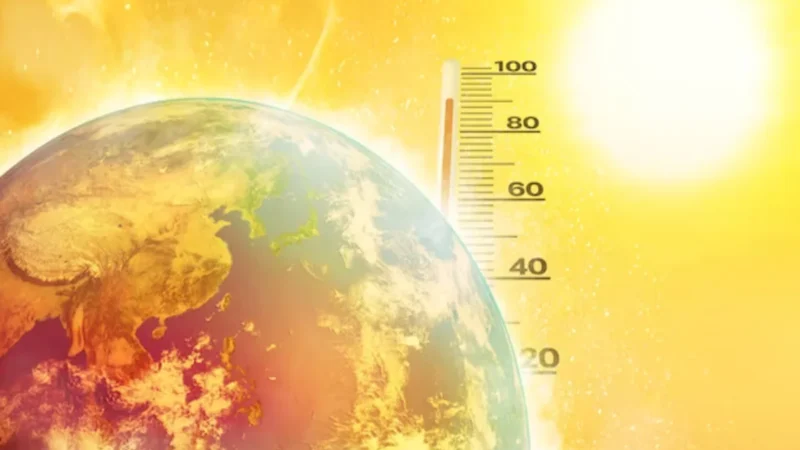Antarctic Sea Ice Worries: Ozone Hole Forms Unusually Early

The delicate balance of Earth’s climate systems is once again under scrutiny as scientists observe a concerning phenomenon: the unusually early formation of the yearly ozone layer hole over Antarctica. This development is triggering widespread fears over the fate of Antarctic sea ice, as these two interconnected occurrences could have significant implications for global climate patterns and ecosystems.
1.The Ozone Layer Hole:
The ozone layer, located in the stratosphere, plays a critical role in shielding life on Earth from harmful ultraviolet (UV) radiation. However, over the past few decades, human-made chemicals known as chlorofluorocarbons (CFCs) and halons have led to the depletion of ozone molecules, creating an “ozone hole” primarily over Antarctica. This hole typically forms during the Southern Hemisphere’s spring (September to November) when the combination of low temperatures and high-altitude polar stratospheric clouds triggers chemical reactions that accelerate ozone destruction.
2.Premature Ozone Hole Formation:
In recent years, a growing concern among climate scientists is the increasingly early appearance of the ozone hole. The regular pattern of ozone hole formation has been disrupted, with some instances of its occurrence happening “very early” in the year. This premature formation suggests that the depletion of ozone is happening at an accelerated rate, likely due to complex interactions between atmospheric temperature changes and human-induced emissions.
3.Interplay with Antarctic Sea Ice:
The link between the early ozone hole formation and Antarctic sea ice is multifaceted. The ozone layer’s depletion influences atmospheric circulation patterns, leading to changes in wind and temperature distribution over the Southern Ocean. These changes can have a direct impact on sea ice dynamics, affecting its extent, thickness, and seasonal melting patterns.
4.Climate Impact and Environmental Concerns:
Antarctic sea ice plays a critical role in regulating global climate systems. Its reflective surface helps to bounce solar radiation back into space, contributing to the Earth’s energy balance. Additionally, the sea ice provides a habitat for various species, including seals and penguins, and supports the delicate marine food web. If the premature ozone hole formation continues to influence sea ice patterns, it could disrupt ecosystems, marine life, and contribute to rising sea levels.
5.Scientific Community’s Response:
Climate scientists worldwide are closely monitoring these developments. They are using advanced satellite technology, atmospheric modeling, and historical data to understand the intricacies of the relationship between the early ozone hole formation and Antarctic sea ice changes. By unraveling these connections, researchers aim to provide accurate projections of the potential environmental impacts and inform policy decisions.
we can conclude this, the formation of the yearly ozone layer hole over Antarctica is occurring “very early,” raising significant concerns about its interconnected effects on Antarctic sea ice and the broader climate system. As the scientific community intensifies its efforts to understand these complex interactions, the urgency to mitigate human-induced emissions and protect the delicate polar regions becomes ever more apparent. It is imperative to address these interconnected challenges to ensure the long-term stability of our planet’s climate and ecosystems.
FAQs
1. Why is the early formation of the ozone hole a concern for Antarctic sea ice?
The ozone hole’s premature appearance indicates that ozone depletion is happening faster than anticipated. This depletion can influence atmospheric circulation, affecting wind and temperature patterns over the Southern Ocean. These changes can directly impact the dynamics of Antarctic sea ice, potentially leading to shifts in its extent, thickness, and melting patterns, which can disrupt ecosystems and climate systems.
2. How does the ozone layer affect climate and ecosystems?
The ozone layer acts as a shield against harmful ultraviolet (UV) radiation from the sun. When it depletes, more UV radiation reaches the Earth’s surface, posing risks to human health and the environment. Moreover, changes in the ozone layer’s distribution can alter atmospheric circulation patterns, which can have cascading effects on climate, weather, and ecosystems globally.
3. What role does human activity play in the ozone hole’s formation?
Human-made chemicals like chlorofluorocarbons (CFCs) and halons are responsible for the depletion of the ozone layer. These chemicals were once widely used in products like aerosol sprays and refrigerants. While international agreements like the Montreal Protocol have curbed their production, the lingering presence of these chemicals in the atmosphere continues to impact the ozone layer.
4. How do scientists study the relationship between the ozone hole and Antarctic sea ice?
Scientists employ a combination of satellite observations, atmospheric modeling, and historical data to study the interactions between the ozone hole and Antarctic sea ice. They monitor changes in ozone concentration, sea ice extent, and atmospheric conditions to understand how variations in the ozone layer’s depletion influence sea ice dynamics and climate patterns.
5. What can be done to address these concerns and protect the environment?
To address the concerns related to the early ozone hole formation and its impact on Antarctic sea ice, it’s crucial to continue reducing human-made emissions of ozone-depleting substances. International cooperation and compliance with agreements like the Montreal Protocol are essential. Additionally, raising awareness about the interconnectivity of these issues can drive public and policy action toward sustainable practices that preserve both polar regions and the global environment.


